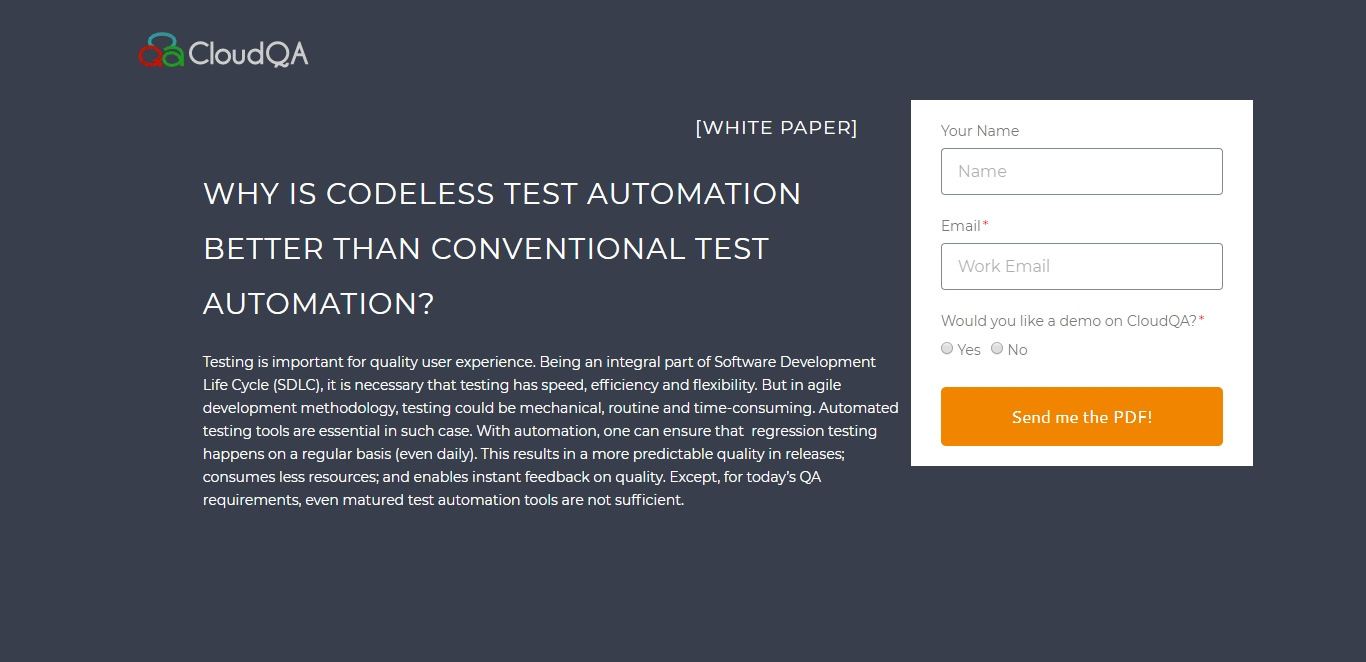Test Automation 101 - A Short Introduction
Test Automation 101: A Short Introduction
Test automation refers to specialized software that makes your life much easier. Instead of overworked software engineers looking through a hundred screen and trying a hundred different input combinations manually, you just run the web test automation software, and voila! You know what problems are cropping up, why and where, all at the click of a button.
There are two broad approaches to test automation – GUI testing, and API driven testing. GUI testing, expanded to mean graphical user interface testing, measures things like keystrokes and mouse clicks. This is done to validate the behavior observed and ensure the program is running correctly in relation to these events. It mimics human behavior and mimics how a human would interact with the program, which is only limited to the interface. GUI testing finds bugs early and is a very easy way to conduct regression testing as well.
API driven testing usually bypasses the application’s user interface and uses an entirely programming interface that validates application behavior. Thus, it is a program that checks how the project under consideration interacts with other software, so that end user experience is not hampered. API testing checks compliance, security, and functionality issues.
While these are the traditional approaches, unit testing, i.e, testing of small blocks of code using xUnit frameworks, is a must in agile development. A unit is the smallest part of the program that can be tested and is extremely useful as these form the foundations for component testing.
Test automation is an extremely important part of any software development. It saves time, and it saves money.
Manual testing may take days to set up, and days to execute, and even then, it isn’t 100% accurate. These tests are done repeatedly during development and may extend project timings for weeks. With test automation software like CloudQA, you can have tests and results ready in hours.
To err is human, and humans definitely make a lot of errors. Manual testing, thus, is inherently flawed. However good a worker you may have, he or she is going to make mistakes.
You can cut that margin of error down to 0 when you used automated software, and you’ll get detailed, flawlessly recorded results at the end. All tests have meticulous records attached, so you can go over your mistakes in-depth to understand what went wrong better.
Additionally, test automation software can simulate hundreds or even thousands of users, which manual engineers cannot. Many test automation frameworks don’t even need much technical know-how to operate and reduces stress on the software development side as well.
Knowing what and when you need to start automation will go a long way in helping you develop your software. While test automation plans need to be meticulously planned out, a good rule of thumb is to start early and do it as often as you can. Going for test automation early on in a project helps because one, you get a stable base to build your program, and two, small errors in code at the beginning of the project are both easier and cheaper to fix than reworking your entire code from scratch.
When chalking out your testing plan, do not forget to include functional unit testing to ensure a bug-free end product.
When deciding upon your time-frame for web test automation, there are a couple of pointers you should keep in mind. Test when you feel there is a lot of regression work to be done, when you need to check the load capacity of your software, and when your GUI remains the same, but the functionality of different aspects has changed.
Testing automation software has changed the way software is developed and maintained in the world. It is more reliable than manual testing, and saves a ton of money and time, leading to faster, more efficient and easier to use software that has defined the market in recent years.
If you’ve been having problems in your code, and if your engineers are overworked, if you’re getting closer to your deadlines with a bigger, and bigger workload – testing automation is the right choice for you!
If you want to learn more about being more productive with Test Automation, contact us at CloudQA ([email protected])
LIKE THIS POST SHARE IT WITH YOUR FRIENDS
RECENT POSTS
Guides

How To Select a Regression Testing Automation Tool For Web Applications
Regression testing is an essential component in a web application development cycle. However, it’s often a time-consuming and tedious task in the QA process.

Switching from Manual to Automated QA Testing
Do you or your team currently test manually and trying to break into test automation? In this article, we outline how can small QA teams make transition from manual to codeless testing to full fledged automated testing.

Why you can’t ignore test planning in agile?
An agile development process seems too dynamic to have a test plan. Most organisations with agile, specially startups, don’t take the documented approach for testing. So, are they losing on something?

Challenges of testing Single Page Applications with Selenium
Single-page web applications are popular for their ability to improve the user experience. Except, test automation for Single-page apps can be difficult and time-consuming. We’ll discuss how you can have a steady quality control without burning time and effort.

Why is Codeless Test Automation better than Conventional Test Automation?
Testing is important for quality user experience. Being an integral part of Software Development Life Cycle (SDLC), it is necessary that testing has speed, efficiency and flexibility. But in agile development methodology, testing could be mechanical, routine and time-consuming.







